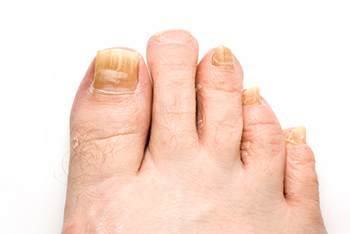Connect With Us
Fungus Toenails

The forefoot is generally an area of the foot that stays warm and damp, unfortunately making it a prime location for fungus to grow and thrive. If left untreated, seemingly harmless fungal infections can spread, which is why it’s so important to get professional help early on and learn about your treatment options.
Fungal infections in toenails most often occur due to fungus getting through cracks in the nails or through a widened gap or spacing between the nail and the nail bed. Common signs that you may have a fungal infection of your toenails include thicker than normal toenails, oddly shaped toenails, discoloration of the nail, or separation of the nail and nail bed. Fungal infections can affect anyone but are especially common in those with diabetes or athlete’s foot. The risk of having toenail fungus also increases as you age, if another family member has it, or if you have a weaker immune system.
To avoid getting a fungal infection of your toenails, it’s important to wash and dry your feet daily with soap and water, making particularly sure to dry thoroughly between your toes. Only use nail clippers to trim your toenails that are clean and unused by anyone with toenail fungus. Avoid barefoot walking in areas where fungus is known to thrive, such as swimming pools or locker rooms. Use a Lysol or antifungal spray several times a week to treat the insides of your shoes for fungus, making sure to allow ample drying time before use. Try to rotate wearing different pairs of shoes throughout the week to avoid keeping any one pair of shoes too damp inside.
If you believe you’re experiencing a fungal toenail infection, we recommend that you speak with a podiatrist as soon as possible for a proper diagnosis and suggested plan for treatment.
